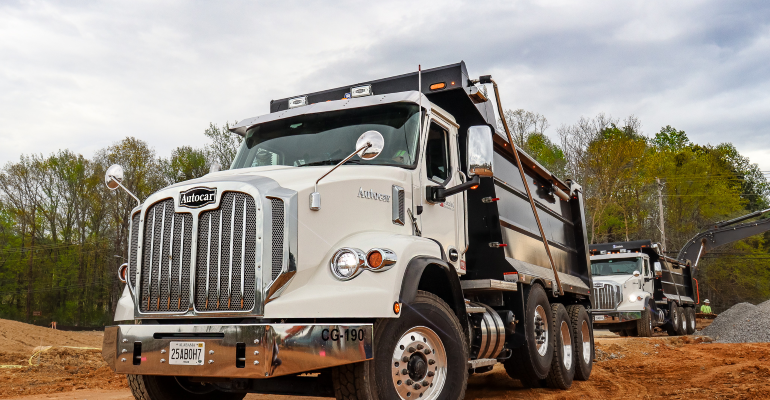General Motors and Autocar Industries form a partnership to create zero-tailpipe-emissions vocational vehicles powered by GM’s HYDROTEC power cubes.
Vocational vehicles – specialized vehicles designed for specific work purposes such as construction, mining, maintenance and warehouse industries – come in different shapes and sizes. They are considered the low-hanging fruit in the advancement of hydrogen-powered mobility and transportation.
“EV propulsion systems like GM’s Ultium Platform are great solutions for electrifying passenger vehicles, but larger vehicles like Autocar’s Class 8 trucks, refuse trucks and terminal tractors require robust solutions that enable significant energy-carrying capacity and fast refueling times,” says Charlie Freese, GM executive director, Global HYDROTEC. “We want to enable zero-tailpipe-emissions solutions for the largest, highest-energy-consuming vehicles, and fuel cells are ideal for the most energy-intensive applications.”
Hydrogen fuel cells are a key component of GM’s electrification strategy which extends beyond battery-powered passenger vehicles. GM has long tried to leverage its fuel cell strategy and technology into stationary power, as well as for vocational, maritime and heavy-duty truck applications. The fuel-cell technology applied to passenger vehicles is not too different from that needed for non-passenger-vehicle industries.
The state of California, the U.S. government, the European Union and China are moving to replace vehicles, including vocational vehicles, that run on diesel with zero-emission vehicles that are either battery- or hydrogen-fuel-cell-powered.
These jointly developed trucks will be powered by GM’s HYDROTEC power cubes, which are GM’s fuel cell propulsion system solution for these demanding commercial vehicles. HYDROTEC power cubes are compact, easy to package, scalable and can electrify vehicles and applications across a variety of industries, from freight trucking, aerospace and locomotives to power generation.
The first of these vehicles is expected to go into production in 2026 at the Autocar Truck Plant in Birmingham, AL. Vehicles with HYDROTEC technology will be built to order by Autocar and will be sold directly to customers. Cement mixers, roll-off and dump trucks, which all share a common architecture, will be built first, followed by refuse trucks and terminal tractors.
“Autocar provides customized vocational trucking solutions, and as regulations change, we see HYDROTEC fuel cells as an additional avenue for our customers to meet their EPA requirements with zero-tailpipe-emissions vehicles,” Autocar President Eric Schwartz says. “GM’s scale, reliability and the capability of their HYDROTEC fuel cell technology will enhance Autocar’s existing platforms.”
Each power cube contains more than 300 hydrogen fuel cells, along with thermal and power management systems and proprietary fuel cell and battery life controls and performance while optimizing cold start capability. The HYDROTEC power cube provides 77 kw of power and is much quieter than a conventional diesel propulsion system. Multiple power cubes can be arrayed in a vehicle for even higher power ratings.
Triz Engineering will provide expert integration support for power distribution between the fuel cell and batteries, which store electricity that is captured from regenerative braking or is created by the HYDROTEC power cubes. Triz Engineering is a commercial vehicle engineering company owned by GVW Group, which also owns Autocar.
GM’s HYDROTEC fuel cell power cubes will be produced by GM in Brownstown Township, MI.





